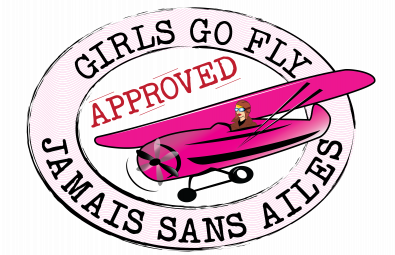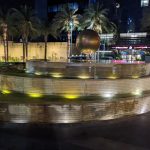 This will undoubtedly be the longest and most difficult day of the trip. Many people think that crossing the North Atlantic is the toughest part of the trip, and in some respects they’re right: the three days spent over the ocean were no picnic.
This will undoubtedly be the longest and most difficult day of the trip. Many people think that crossing the North Atlantic is the toughest part of the trip, and in some respects they’re right: the three days spent over the ocean were no picnic.
However, covering 1431 nautical miles (2652 kilometers or 1648 statute miles) with a ground stop of just 2 hours is quite a feat, even with two pilots at the controls.
We took off at 6.30 a.m. from Tokol and landed at 3 p.m. in Heraklion, Crete. We took off again at 5pm, after resolving some flight plan issues with the Cretan air traffic controllers, and finally landed at 01:35am in Hurghada, Egypt!
I have to say that the professionalism of all the pilots on this mission was second to none. Our communication was excellent, and control transitions between my co-pilot and I were always respectful and safe.
In all, we flew for 16.5 hours and were on the move for 20! You’re probably wondering why we didn’t just spend the night in Greece and hit the road again the next day. Here’s the explanation:
When you’re ferrying aircraft, the costs on the ground are exorbitant. Each landing and handling of the aircraft on the ground costs thousands of dollars. Add to this the cost of hotels, meals for the crew, and the documentation required by each government at each stop (pilot declarations, manifests, flight plans, flight clearances for U.S. aircraft in transit, etc.), and you have a real logistical challenge. What’s more, some airports don’t allow small planes to land on Sundays, unless you pay an extra $1,000 per plane or more. In high season (June to September), hotel rooms are almost impossible to find, when booking at the last minute and the cost of hotel rooms in Greece quadruples, especially near international airports. Finally, since we have to clear customs at every stop, we’re forced to land at these airports.
Then there are the fuel requirements. Archer DXs consume Jet A1, available mainly at the major airports serving the airlines. The weather also plays an important role: when it’s favorable and we’re heading to warmer and warmer countries, we need to plan take-off and landing times accordingly. Finally, the destination airport must be able to accommodate us, which means requesting slots like airliners.
Interesting fact: Egyptians are educated, respectful and religious. Even on the airwaves, between pilots and air traffic controllers. The result is different from what we know in the West. The expression Salam Aleykoum is frequently used to greet someone. Its true definition is “May peace be with you”. Then, the expression Incha’Allah, which means “God willing”, is just as frequently used to obtain God’s graces. So, here’s how it goes between pilots and controllers. Once initial contact has been established, the pilot says:
Salam Aleykoum, November Seven Two One Delta X-Ray at 9,500 feet, 35 nautical miles North of Cairo, Incha’Allah request to fly direct to Hurgada, Aleykoum Salam”. The controller then replies (if he grants the pilot’s request), “Salam Aleykoum November Seven Two One Delta X-Ray, direct to Hurgada approved at 9,500 feet, Aleykoum Salam”.
So imagine the clutter on the radio when all the pilots and controllers are talking so respectfully to each other. Well, we experienced it. Crossing the controlled zone of Cairo between 10:30 pm and 0:00 am, it took us over 30 minutes before we could finally talk to the air traffic controller. We tried everything, even going back to the previous controller to request another frequency, to no avail.
Another interesting fact: The sunset took place when we were 100 nautical miles from Alexandria, Egypt. The lights of the sailboats in the bay and of the town welcomed us. Once over land, the sky was black and we began to see the stars thanks to the clear skies.

The Northern coast of Alexandria, Egypt.

West of Port-Saïd, Egypt
Knowing that I had at least another 4 hours of night flying ahead of me, I decided to experiment with flying by the stars, as thousands of pilots had done before me, before GPS, before navigation charts, before all the instruments now available in our modern aircraft. So I aligned the plane exactly on the desired heading using my modern instruments, found a perfectly aligned star and flew staring only at the stars. I managed to fly like this without deviating from my course for a good hour. Suddenly, my star was less and less visible, and I realized that the visual pollution of Cairo was preventing me from continuing to fly by the stars, a problem that pilots in the 30s and 40s wouldn’t have had. An hour later, I was able to resume my visual flight exercise thanks to the electricity-free desert.

The Moon rise and haze over Cairo, Egypt.
My co-pilot took over the controls an hour before landing in Hurgada so that I could rest. He kindly let me fly for over 4 hours to improve my night flying skills. I’m very lucky to fly with such thoughtful and generous people.
Flight time: 16.5 hours.
Distance: 1442 NM (2670 km or 1659 statute miles)
Let’s move on to the other photos of the day. Don’t forget to check out all the videos here.

Over Plocica, Serbia

Skorenovac, Serbia

Skorenovac, Serbia

Vucje, Serbia

Vucje, Serbia

Beautiful (but unfriendly) mountains of Nakrivanj, Serbia

Beautiful valley of Stubal, Serbia

North Macedonia

Plateia, Greece

Off the island of Kelifos, Greece

Island of Skiathos, Greece

Isle of Giaros, Ano Siros, Greece

Isle of Folegandros, Greece

Isle of Gouves – Chersonissos, Greece

Maintenance hangar in Heraklion, Greece

The ramp in Heraklion, Greece.

30 miles North of Heraklion, Greece.


